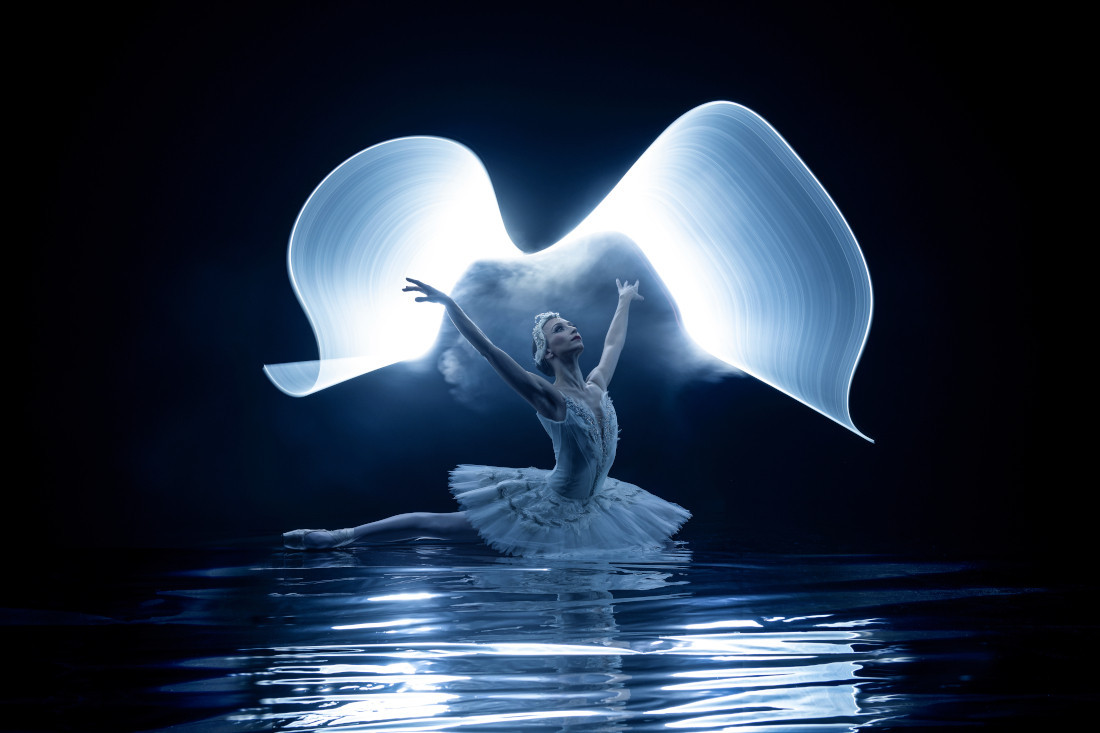After the swan song
Behind the scenes of RWB’s Swan Lake
André Lewis is no stranger to Swan Lake. The artistic director’s career at the Royal Winnipeg Ballet (RWB) has spanned three decades. Over the phone, he vividly recalls dancing in the RWB’s first full production of Swan Lake in the late ’80s.
“You learn from the generation that has just done it. Each generation brings a further evolution to it,” Lewis says.
This edition of Pyotr Ilyich Tchaikovsky’s ballet, which premiered in 1877, is technically a few years in the making. In 2021, the RWB released Visions of Swan Lake, a video series of the RWB performing the ballet’s most iconic scenes.
But leaving it to the digital realm didn’t suffice. So, from March 8 to 12, the ballet took to the Centennial Concert Hall stage.
This year’s ballet was particularly special for Lewis. Soon, he’ll sing his swan song. He plans to retire from the company in 2025. While the RWB conducts a coveted search for its next artistic director, Lewis will bear witness to another rendition of the timeless ballet.
Likewise, it's not the Winnipeg Symphony Orchestra’s (WSO) first rodeo – or ballet, rather – either. Both the RWB and the symphony share a home at the Centennial Concert Hall, with productions like The Nutcracker returning each holiday season.
When conducting a standalone symphony, principal conductor Julian Pellicano dedicates 100 per cent of his attention to the musicians on stage. But when he’s in the orchestral pit, it drops to 80 per cent. The remaining 20 per cent observes the delicate rhythms of the dancers’ feet.
It’s how music and movement converse in the same language.
“As a conductor for the ballet, you need to be sensitive to choreography. You need to be interested in the bigger picture, beyond just the music,” Pellicano says.
“Often, music on its own can be very ambiguous as to exactly what it says. We can kind of feel what it says, but it’s hard to pinpoint exactly what music is about. But when it comes to ballet, the story and the choreography and the way that the production is directed can be very specific.”
In Act III, the ballet welcomes the Rusalka Ukrainian Dance Ensemble to the stage to perform the Mazurka, a Polish dance number.
“This style of dance is similar to some of what we are used to, although it’s obviously more balletic than it is Ukrainian,” Christine Preachuk, Rusalka’s technical director, says. “The two countries do border each other in Europe, so there are a lot of similarities in classical verse steps.”
The dance ensemble, which celebrates its 60th anniversary this year, is guided by two former RWB dancers: Dmitri Dovgoselets and Tristan Dobrowney.
On the night of the Saturday show, young women came with ribbons in their hair and fashion that could be deemed “balletcore” on social media.
Pop culture never ceases to absorb classic tales, and Swan Lake has inspired no shortage of new works, the most popular being Darren Aronofsky’s film Black Swan.
Lewis has never seen the film but assures readers that he’s “not at all” like the distasteful director.
While most relics of pop culture fade into history, Swan Lake carries a timeless quality that renders it a cultural heirloom.
“It’s like a fine wine,” Lewis says. “It improves with age.”
Published in Volume 77, Number 22 of The Uniter (March 16, 2023)








